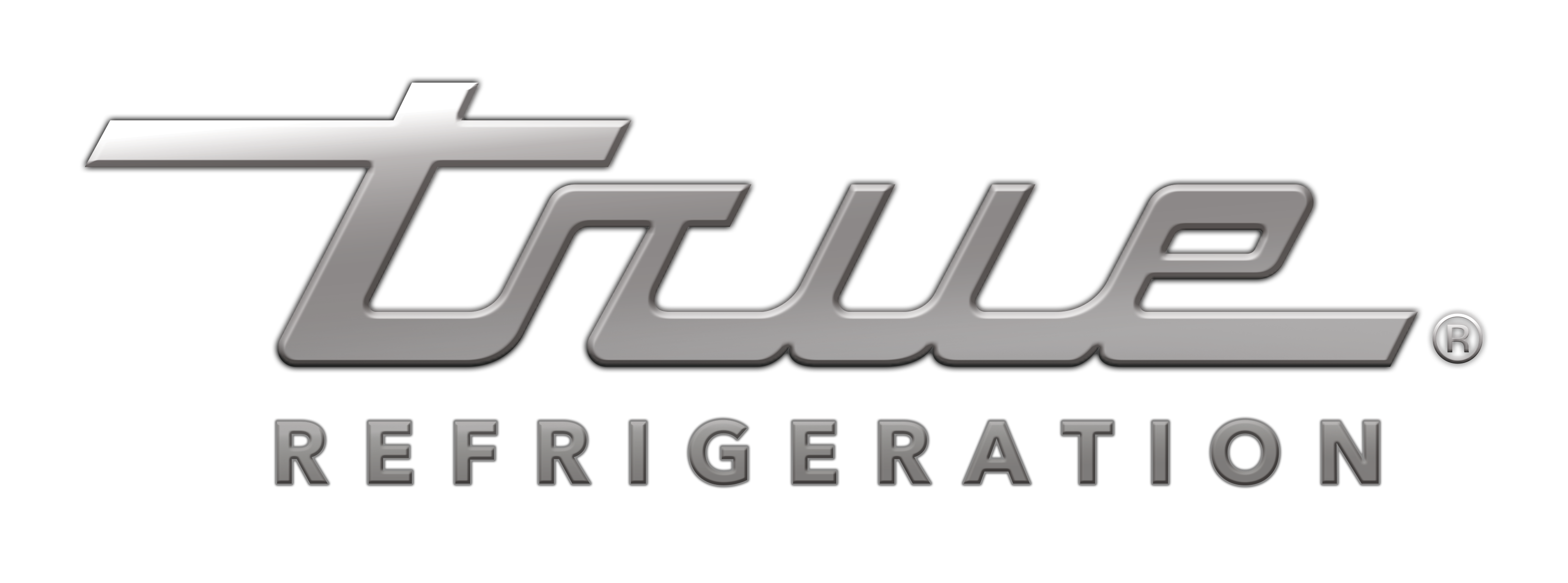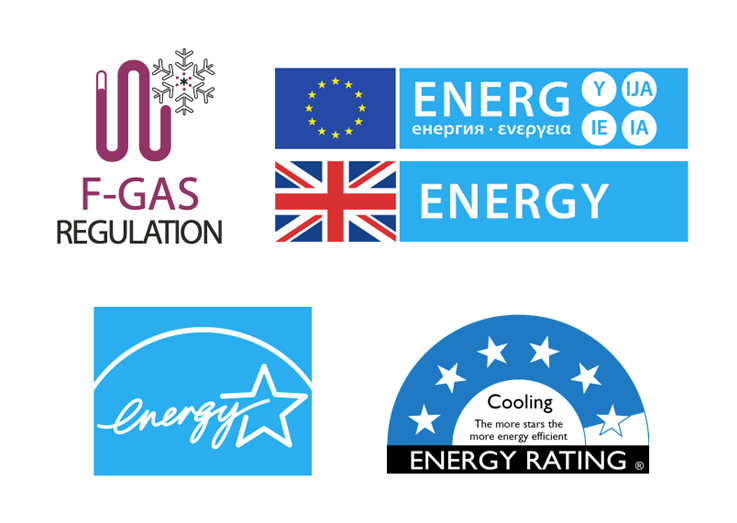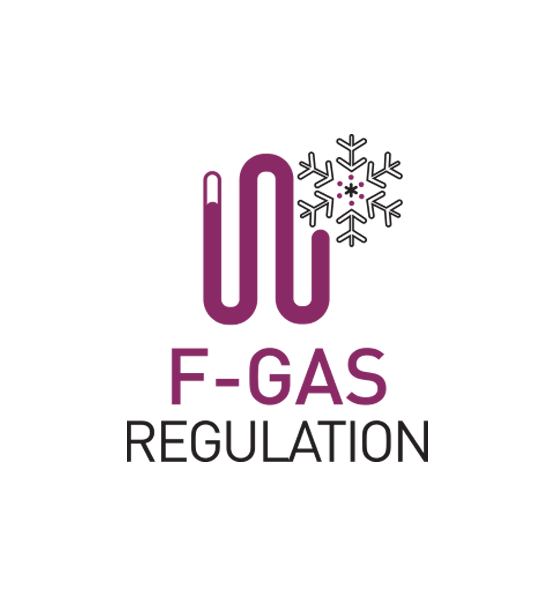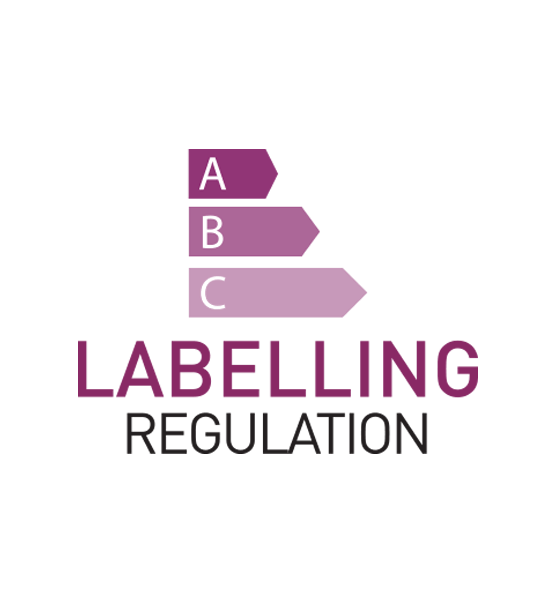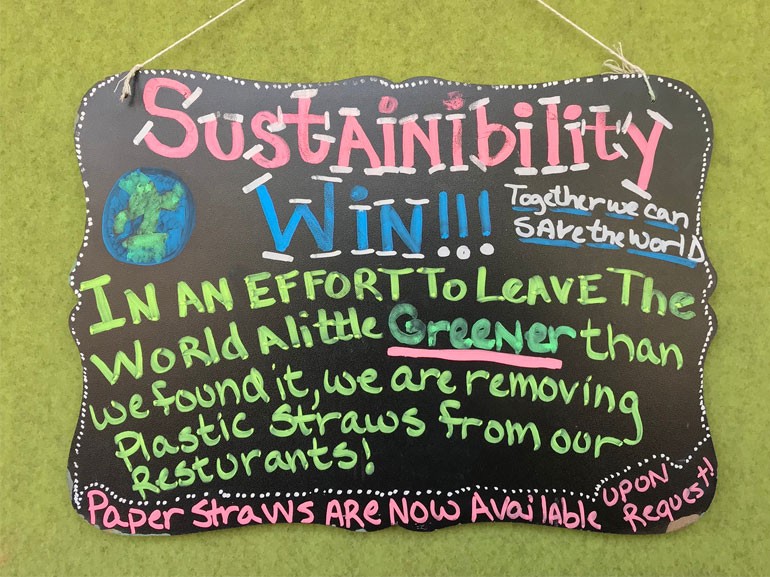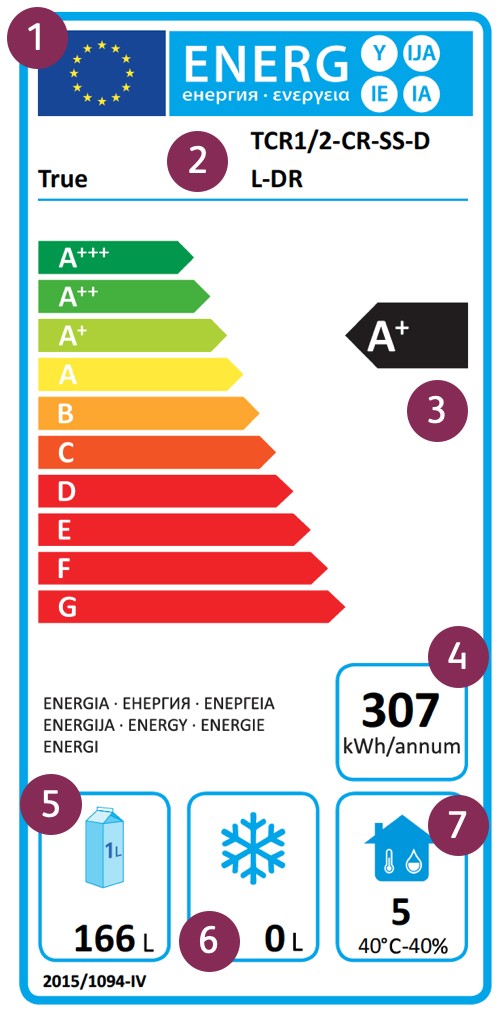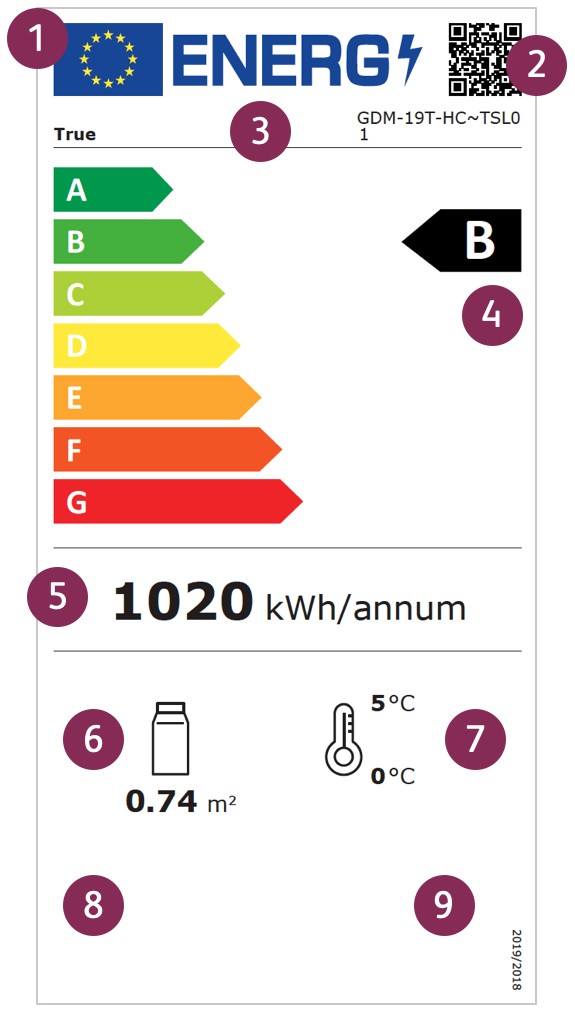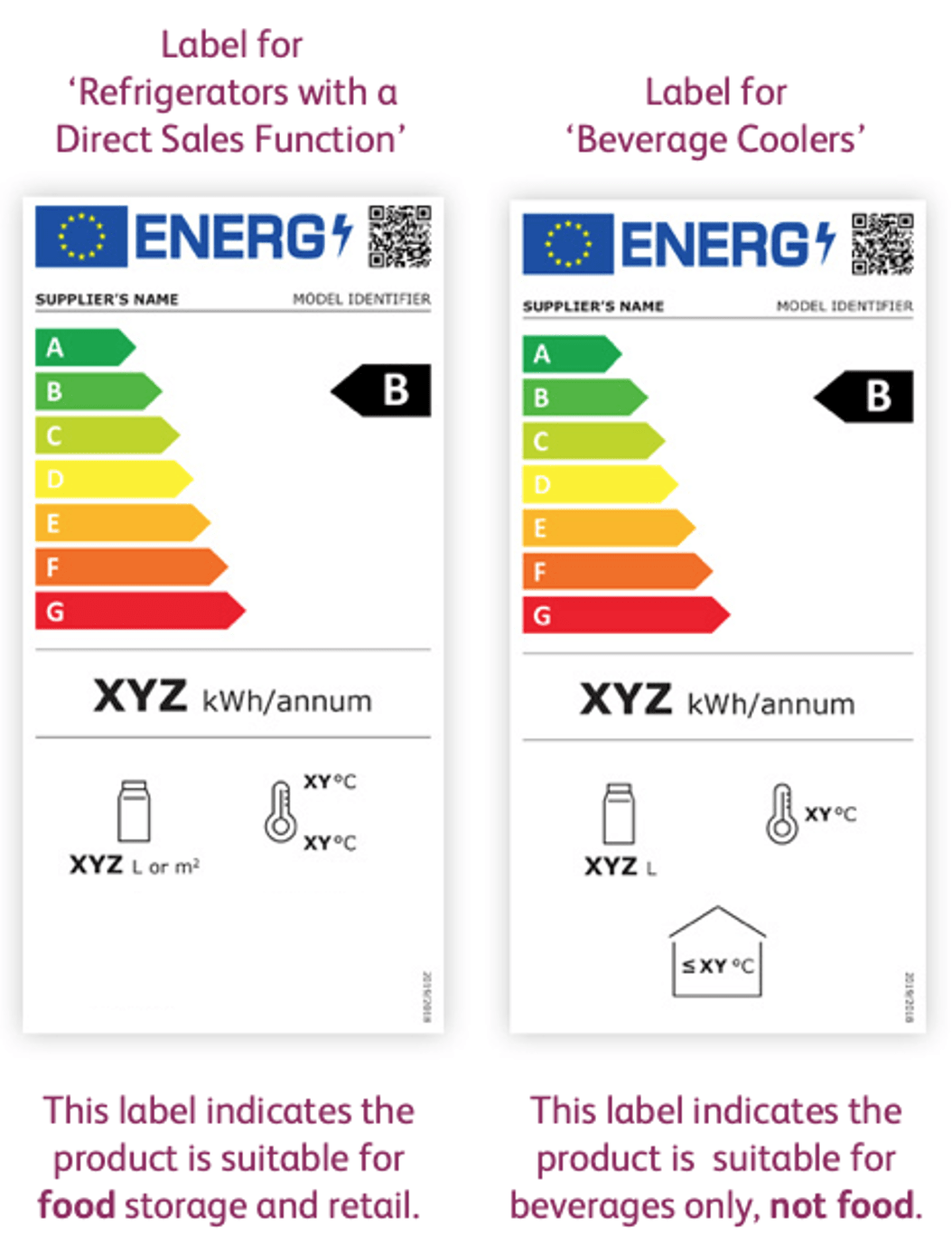The ‘Professional Refrigerators’ product category applies to various commercial refrigerator and freezer solid door/drawer storage cabinets, commonly used in foodservice kitchen and hospitality settings, including upright and counter units, plus other types such as blast chillers.
It has been a requirement since 2016 that these products meet minimum energy performance standards and carry labels. The EU estimates that regulating these products could create energy savings of 15.6 TWh by 2030 (1 terawatt hour = one billion kilowatt hours).
EN16825:2016 is the European test standard applicable to ‘Professional Refrigerators’ and freezers. It consists of two sequential 24 hour test periods, with energy consumption measured during second 24hr period.
The cabinet is loaded in a specified way with bricks made of “Tylose gel” (a substance which simulates the properties of lean beef). Some of these bricks (referred to as measurement packs or “m-packs”) contain a temperature probe which is attached to test machinery, recording their temperature over the course of the test.
For refrigerators, the door is opened 6 times per hour (for 7 seconds) for 12 hours in a row, and all m-packs must stay within a -1°C to 5°C range at all times to successfully pass.
For freezers, the door is opened 6 times per hour for 7 seconds for the first 4 hours. Then remains closed for 4 hours. Then another 4 hour opening cycle same as the first. All m-packs must stay below -15°C, for the full period in order to successfully pass.
EN16825 tests are performed in special environment chambers which can be set to specific conditions, typically 30°C or 40°C. These ambient temperatures have been selected as being representative of conditions found in some commercial kitchen environments, and are referred to as Regular Duty or “Climate Class 4” and Heavy Duty or “Climate Class 5”. The Climate Class which a product has been tested to is a part of the energy label for ‘Professional Refrigerators’.
The letter grade on the label is called it’s “Energy Efficiency Class” (EEC) and is calculated by taking the amount of energy consumed during a successful EN16825 test at Climate Class 4 and the Net usable capacity, to calculate a numeric figure called the “Energy Efficiency Index” (EEI).
This EEI is then applied against a set table containing acceptable energy ranges and associated letter bandings to determine the EEC of the product. The bandings of the table are designed to change over time, rescaling as the average energy efficiency of new products improves, and so removing the less efficient ones from sale.
| Energy efficiency classes of professional refrigerated storage cabinets |
Energy Efficiency
Class |
EEI |
| A+++ |
EEI < 5 |
| A++ |
5 ≤ EEI < 10 |
| A+ |
10 ≤ EEI < 15 |
| A |
15 ≤ EEI < 25 |
| B |
25 ≤ EEI < 30 |
| C |
35 ≤ EEI < 50 |
| D |
50 ≤ EEI < 75 |
| E |
75 ≤ EEI < 85 |
| F |
85 ≤ EEI < 95 |
| G |
95 ≤ EEI < 115 |
| Model |
Net Volume (litres) |
EEC |
EEI |
24 hr/Energy Consumption (kWh) |
Annual Energy Consumption (kWh) |
| TGN-1R-1S |
435 |
A |
24.8 |
0.899 |
328 |
